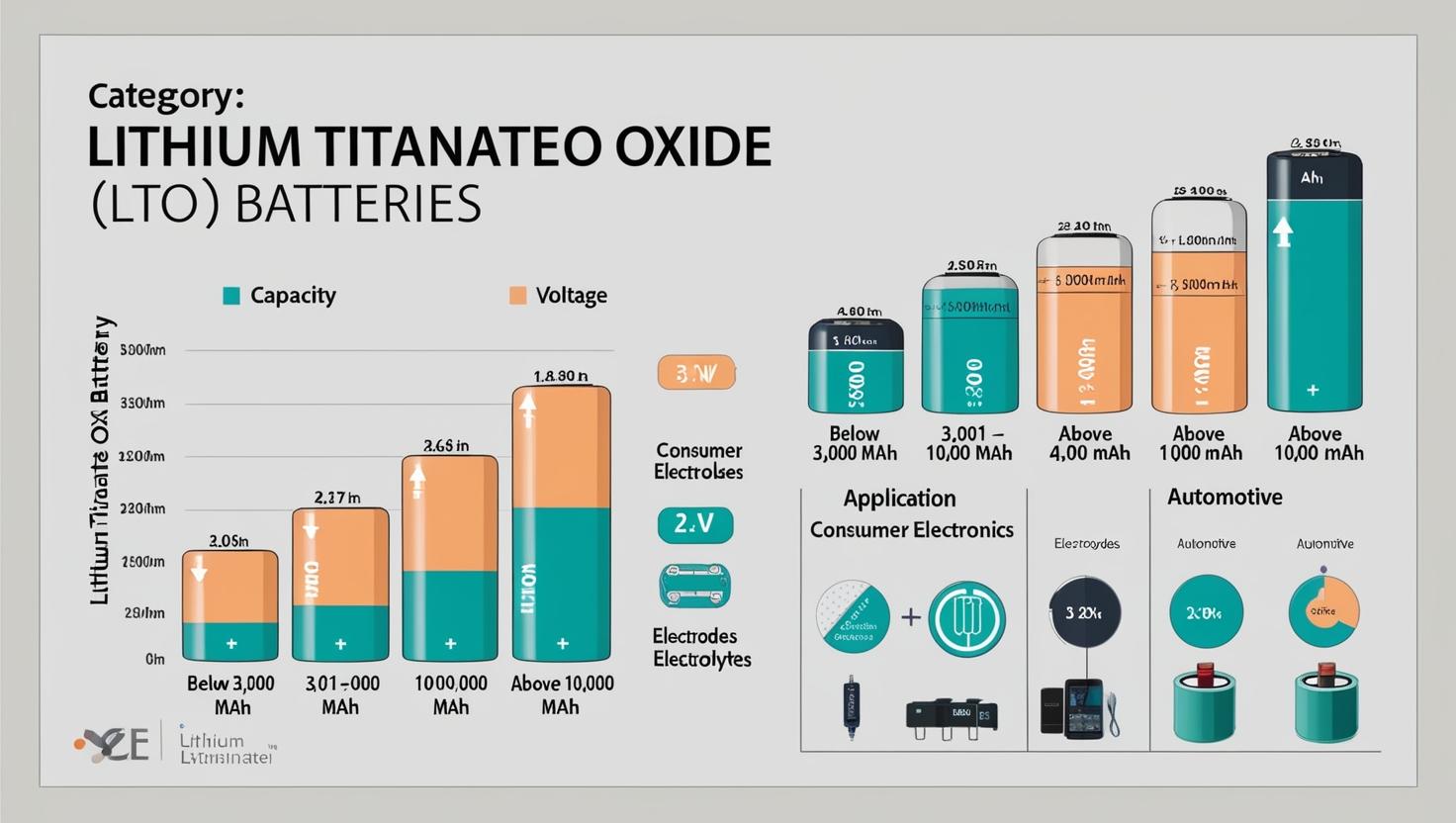As the global demand for faster, safer, and more durable energy storage solutions accelerates, a once-niche battery chemistry is rapidly gaining traction: Lithium Titanate Oxide (LTO). While lithium-ion batteries have long dominated the market, LTO batteries are quietly becoming a favorite among industry experts, technology developers, and—more recently—investors.
With their exceptional safety profile, ultra-fast charging capability, and long lifecycle, LTO batteries are increasingly viewed as a strategic piece of the global energy transition. From electric vehicles and industrial applications to renewable energy storage and critical infrastructure, LTO’s advantages are hard to ignore.
Lithium Titanate vs. Lithium-Ion: What’s Driving the Shift in Battery Tech?
As industries demand faster charging, longer life cycles, and greater safety, Lithium Titanate (LTO) batteries are gaining attention as a high-performance alternative to traditional lithium-ion. While lithium-ion remains dominant for energy density, LTO excels in ultra-fast charging, extreme durability, and thermal stability—making it ideal for EVs, grid storage, and industrial applications. This shift reflects a broader trend toward specialized battery chemistries tailored for emerging clean energy needs.
So why is investor interest surging now? Let’s explore the key drivers.
The Performance Advantage: Speed, Safety, and Stability
At the core of investor enthusiasm is the technical performance of LTO batteries. Unlike conventional lithium-ion batteries that use graphite anodes, LTO batteries use lithium titanate, which allows for:
-
Ultra-fast charging (often in under 10 minutes)
-
High power output and performance at low temperatures
-
Extremely long cycle life—up to 10,000–20,000 cycles
-
Exceptional thermal and chemical stability
These attributes make LTO batteries a natural fit for public transportation fleets, military-grade storage, aerospace, emergency backup systems, and fast-charging EV infrastructure—segments that prioritize reliability, safety, and rapid energy turnover over energy density.
Download PDF Brochure @ https://www.marketsandmarkets.com/pdfdownloadNew.asp?id=161263677

Strategic Applications with Long-Term Upside
What makes LTO especially attractive from an investment perspective is its applicability across multiple growing markets:
-
Electric Buses and Commercial EVs: Cities worldwide are electrifying public transport. LTO batteries offer rapid charging between short stops and longer service life—making them ideal for 24/7 operations.
-
Energy Storage Systems (ESS): In grid applications where high cycle life and safety are paramount—like peak shaving, frequency regulation, and microgrids—LTO is emerging as a robust solution.
-
Industrial & Military Use: Forklifts, AGVs, naval vessels, and defense systems rely on batteries that can perform in extreme conditions. LTO’s resistance to swelling, overheating, and fire risk makes it a top contender.
-
Smart Cities & Infrastructure: LTO supports fast backup systems for data centers, telecom networks, and hospitals—where even a few seconds of downtime is unacceptable.
These aren’t distant opportunities—they’re already under development or actively scaling, making LTO investments more tangible than speculative.
Market Momentum and Forecasts
The global lithium titanate oxide (LTO) battery Industry Size is expected to grow from USD 4.5 billion in 2023 to USD 7.3 billion by 2028, at a CAGR of 10.1% from 2023 to 2028.. While it still represents a smaller portion of the total lithium-based battery market, its strategic value in niche high-performance sectors is gaining visibility.
Major manufacturers—such as Toshiba, Yinlong Energy, and Microvast—are expanding production and forming partnerships with transportation and energy companies. This signals growing commercial maturity and de-risks early-stage investment.
At the same time, governments are tightening safety regulations and emphasizing sustainability in energy storage, making LTO’s chemistry—known for its non-flammability and low environmental impact—more appealing in the long term.
Why Investors Are Watching Closely
From a financial perspective, investing in LTO battery technology aligns with three key themes dominating the energy and tech sectors:
-
Decarbonization and electrification of transport and infrastructure
-
Energy security and resilience, especially amid global supply chain and geopolitical uncertainty
-
Sustainable technology innovation, with longer product life cycles and lower risk
LTO is also attractive in emerging markets, where off-grid renewable energy, rural electrification, and fast-deployable infrastructure require robust, low-maintenance storage.
For venture capital, private equity, and even corporate investors looking to diversify within the battery space, LTO offers a differentiated value proposition—not by replacing lithium-ion, but by complementing it in critical high-performance niches.
The Road Ahead
As EV adoption surges and global infrastructure is reimagined for a cleaner, smarter future, the need for multiple battery chemistries will only grow. LTO batteries won’t dominate all sectors—but in the right markets, they offer an unmatched combination of speed, durability, and safety.
With improving manufacturing scalability, rising demand across transit and grid applications, and increasing awareness of lithium-ion’s limitations, LTO is well-positioned to carve out a significant share of the next-gen battery market.
For investors, the message is clear:
Lithium titanate isn’t just a better battery—it’s a smarter bet.
FAQ:
1. What is the key difference between Lithium Titanate and Lithium-Ion batteries?
The main difference lies in the anode material. Lithium-ion batteries typically use graphite, while Lithium Titanate (LTO) batteries use lithium titanate, which enables faster charging, longer cycle life, and better safety, though at the cost of lower energy density.
2. Why are Lithium Titanate batteries gaining attention now?
With growing demand for ultra-fast charging, high safety, and long-lasting storage—especially in EVs, public transport, and grid applications—LTO offers a performance profile that’s well-suited for high-demand, high-frequency use cases.
3. Are Lithium Titanate batteries safer than Lithium-Ion?
Yes. LTO batteries are known for their thermal and chemical stability, making them highly resistant to overheating, swelling, or catching fire, which is a critical advantage in sensitive or mission-critical environments.
4. What are the main drawbacks of LTO batteries?
The primary limitation is lower energy density, which means they store less energy per unit of weight compared to traditional lithium-ion batteries. This can make them less suitable for applications where space and weight are major constraints, like consumer electronics.
